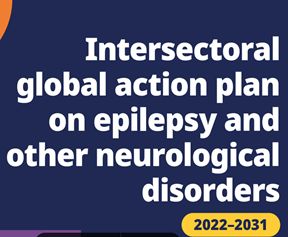Editor’s Choice vol. 116: Epilepsy-associated genes: an update.
Markus Reuber MD PhD, Academic Neurology Unit, University of Sheffield, Royal
Hallamshire Hospital, Glossop Road, Sheffield, S10 2JF
Impressive scientific progress has been made in many fields of medicine, but it would be
easy to argue that the most amazing growth in understanding over the last century has been
in genetics. It is easy to forget that the discovery that genes are made of DNA was only
made in 1952 and the molecular structure of DNA described one year later. Since then,
there has been a dramatic acceleration of the growth of knowledge in this field: While it
took a few years to establish that Down Syndrome is caused by the presence of an extra
copy of chromosome 21 (1959) the growth rate of scientific developments in clinical
genetics has been on an exponential trajectory since the discovery of DNA sequencing in
1975, its increasing availability and reducing cost [1, 2].
The pace of innovation in clinical genetics in general is reflected in the field of epilepsy: By
2017 the team which produced my editor’s choice from the current volume of Seizure were
able to compile a list of 977 genes associated with epilepsy [3]. However, many genetic
discoveries made since then called for an update of this list. The new list by Wang et al. (my
editor’s choice from this Special Issue of Seizure on the Genetics of Epilepsy) is an
impressive piece of work: The updated search identified nearly 3,000 genes potentially
associated with epilepsy. About one half of these genes (1,506) were found in the Online
Mendelian Inheritance in Man (OMIM) database. These included 168 epilepsy genes (86 of
which newly added), 364 genes linked to neurodevelopment-associated epilepsy (including
291 new ones) and 974 epilepsy-related genes (438 more than that in the first version).
Cross-checks with the Human Gene Mutation Database (HGMD) and PubMed allowed the
authors to add a further 1,440 genes to their new list [4].
The identification and categorisation of genes was based on a rigorous procedure involving
an initial search of epilepsy-associated genes in the OMIM database followed by the
exclusion of items for which there was no definite molecular genetic confirmation or for
which information about clear links between specific genes and epilepsy in humans was
lacking. After the additional HGMD and PubMed searches, the likely relevance of the
identified genes was confirmed by cross-referencing the list with the Seizure-Associated
Genes Across Species (SAGAS) database (comprising of 2876 genes potentially associated
with seizures or epilepsies in multiple species), and the Gene4epilepsy database (containing
926 genes included in the epilepsy panels of major clinical diagnostic providers and research
resources).
Of course, the dramatically increased number of genes now potentially linked to epilepsy
only hints at the complex interactions between different genes or genes and environmental
and developmental factors which determine whether a particular genetic abnormality
contributes to the causation of epilepsy or epileptic seizures. As highlighted in Wei-Ping
Liao’s editorial comment in the current Special Issue [5], the pathogenicity of a particular
genetic abnormality also depends on factors such as the Genetic Dependent Quantity, i.e
the lowest limit of the required quantity of genetic function to maintain the biophysiological
function, the Genetic Dependent Nature (i.e. whether a gene is vital to survival, obligatory
for the development of disease-phenotypes, capable of causing mild biological alterations
but not apparent disorders, or dispensable/replaceable) or the Genetic Dependent Stage
(i.e. the developmental stage at which a particular gene is expressed).
These complexities – and the fact that, from where we are standing, we can only see the
outline of the start of the beginning of genetic therapies for the many forms of epilepsy –
mean that, despite the impressive recent progress in this field, there is still much more to
learn!
References
(1) https://www.dna-worldwide.com/resource/160/history-dna-timeline (accessed
11/03/2024).
(2) Claussnitzer M, Cho JH, Collins R, Cox NJ, Dermitzakis ET, Hurles ME, Kathiresan S,
Kenny EE, Lindgren CM, MacArthur DG, North KN, Plon SE, Rehm HL, Risch N, Rotimi
CN, Shendure J, Soranzo N, McCarthy MI. A brief history of human disease genetics.
Nature 2020;577:179-189.
(3) Wang J, Lin ZJ, Liu L, Xu HQ, Shi YW, Yi YH, He N, Liao WP. Epilepsy-associated genes.
Seizure 2017 Jan;44:11-20..
(4) Zhang MW, Liang XY, Wang J, Gao LD, Liao HJ, He YH, Yi YH, He N, Liao WP; China
Epilepsy Gene 1.0 Project. Epilepsy-associated genes: an update. Seizure 2023 Sep
23:S1059-1311(23)00254-6.
(5) Liao WP. Epilepsy-associated genes: discovery, clinical significance, and underlying
principles of genetic medicine. Seizure. 2024 Jan 3:S1059-1311(24)00002-5.




